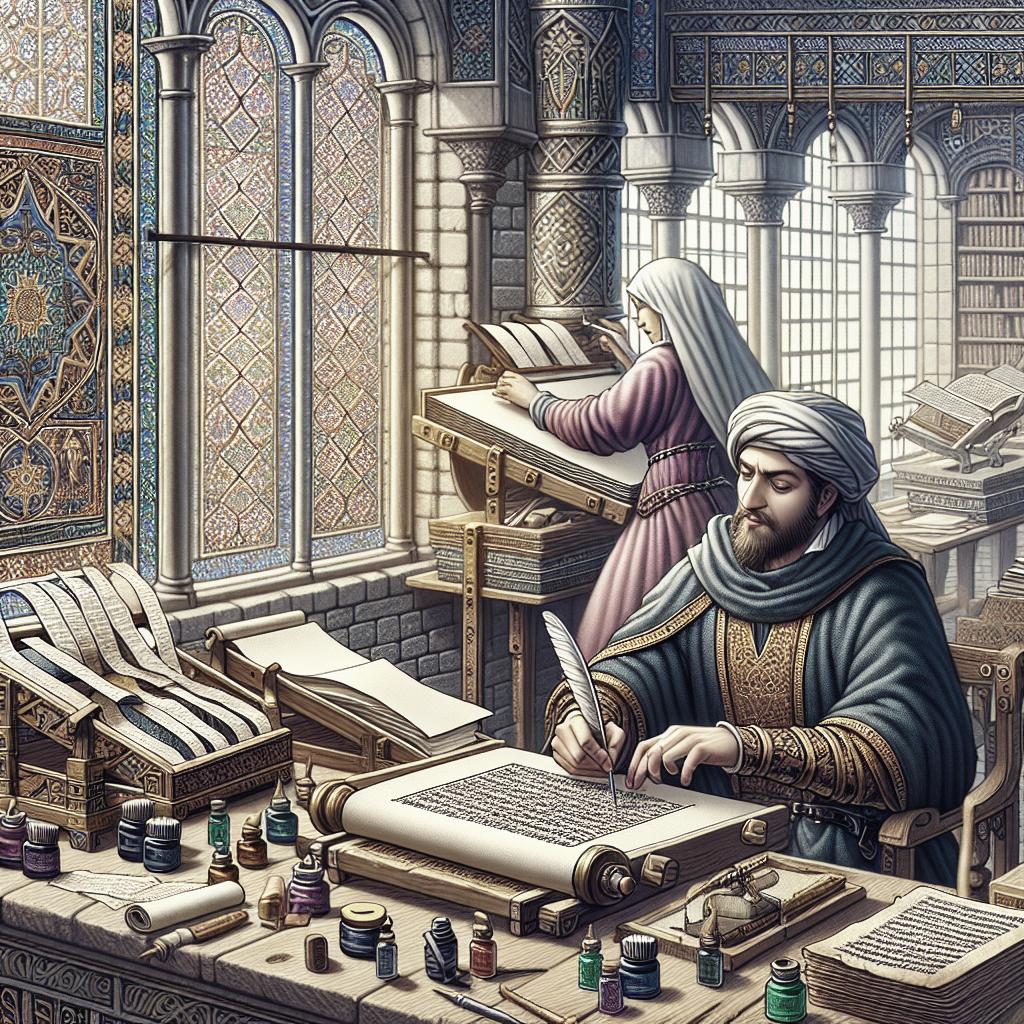<>
Exploring ancient texts offers a glimpse into the cultural, religious, and intellectual landscapes of bygone eras. Among the most fascinating ancient documents are the codices, handwritten books that serve as the precursors to modern printed volumes. This blog post delves into some of the oldest known codices, each offering a unique insight into human history and knowledge. We’ll explore the Madrid Codex, Gutenberg Bible, Celtic Psalter, Diamond Sūtra, Siddur (Jewish Prayer Book), Book of Kells, St Cuthbert Gospel, Nag Hammadi Library, Pyrgi Gold Tablets, and the Etruscan Gold Book. Additionally, learn about the efforts of Wigan Lane Books in preserving and promoting ancient literature.
Madrid Codex
Among the few surviving pre-Columbian Maya books, the Madrid Codex is an important artifact. Believed to have been created between the 14th and 15th centuries, this codex is composed of 112 pages filled with hieroglyphic writing and illustrative depictions. Its origins trace back to the Yucatan region, offering invaluable information about Mayan astrology, rituals, and divinatory practices. Unfolding like a long, accordion-style manuscript, the codex was discovered in Spain and eventually split into two parts mistakenly thought to be separate documents: the Troano and the Cortesianus. The reunification and subsequent identification of the manuscript have helped scholars better understand Mayan civilizations and their sophisticated grasp of timekeeping and celestial phenomena.
Gutenberg Bible
The Gutenberg Bible holds a special place in history as the first major book printed using movable type technology by Johannes Gutenberg in the mid-15th century. This 1,282-page Latin Bible is often regarded not only for its religious significance but also for revolutionizing the dissemination of knowledge through mass production. Approximately 49 copies of the Gutenberg Bible are known to exist today, each recognized for their intricate illustrations and hand-painted decorations. The advent of Gutenberg’s press marked the beginning of the print era, democratizing access to literature and knowledge and setting the stage for the Renaissance and the Scientific Revolution.
Celtic Psalter
The Celtic Psalter, often referred to as the “Scottish Book of Kells,” dates back to the 11th century. This illuminated manuscript of the Psalms, written in Latin, is distinguished by its vibrant pictorial artistry and distinctive Celtic knot designs, reflective of the Insular art tradition. Contained within its finely detailed pages are not just religious texts but also insights into the monastic culture and artistic expressions of medieval Scotland. The intricate designs and detailed ornamentations serve as a testament to the skill and dedication of the scribes who created this beautiful codex.
Diamond Sūtra
Regarded as the oldest known printed book, the Diamond Sūtra dates back to 868 AD. This Chinese text is a crucial Mahayana Buddhist scripture that elaborates on the concept of emptiness and the transient nature of reality. The book was discovered in the Mogao Caves of Dunhuang, where it remained hidden for centuries. This ancient manuscript showcases early printing techniques using woodblocks, signifying monumental advancements in textual dissemination. The Diamond Sūtra holds timeless philosophical significance and exemplifies ancient China’s contributions to global culture and technology.
Siddur, Jewish Prayer Book
The Siddur is among the oldest known Jewish prayer books, dating back to the ninth century. This particular manuscript, written by the Babylonian Geonim, acts as an essential guide for Jewish liturgical practices, including daily prayers, special Sabbath recitations, and festival liturgies. Its survival and continued use bear witness to the rich religious traditions and intellectual endeavors of Jewish communities throughout history. The Siddur serves not simply as a religious artifact but also as a symbol of community identity and continuity across generations.
Book of Kells
The Book of Kells is a magnificently illuminated Gospel book produced by Celtic monks around 800 AD. Known for its elaborate artistry, complex iconography, and beautifully intricate calligraphy, the Book of Kells is a masterpiece of Insular art. Its pages include the Latin text of the four Gospels, richly decorated with colorful illustrations and adornments. These designs reflect deep religious devotion and an unparalleled level of craftsmanship, symbolizing the Early Medieval Christian artistry in the British Isles.
St Cuthbert Gospel
The St Cuthbert Gospel, also known as the Stonyhurst Gospel, is the oldest intact European book, dating from around 698 AD. This Latin pocket-sized book of the Gospel of John was buried alongside St. Cuthbert in his coffin in Lindisfarne, an island off the coast of Northumberland, England. It’s remarkable for its well-preserved condition, including its original binding. The manuscript provides exceptional insights into the book-making techniques and spiritual life of early medieval England. Its discovery has significantly contributed to our understanding of Anglo-Saxon artistry and religious practices.
Nag Hammadi Library
Discovered in 1945 in the Egyptian town of Nag Hammadi, this collection of early Christian and Gnostic texts dates from the 3rd and 4th centuries. The Nag Hammadi Library consists of 13 leather-bound manuscripts containing over 50 texts, including the influential Gospel of Thomas. These codices have revolutionized modern understanding of early Christian theology, offering alternative narratives and rich metaphysical discussions that challenge canonical texts. The Nag Hammadi Library reveals the diversity and complexity of early Christian thought and practice.
Pyrgi Gold Tablets
The Pyrgi Gold Tablets, unearthed in ancient Pyrgi (modern-day Santa Severa, Italy), date back to approximately 500 BC. These three inscribed gold leaves hold texts in both Etruscan and Phoenician languages, a key evidence of cultural exchange in the Mediterranean. These texts provide crucial insights regarding religious practices and diplomatic relations of Ancient Etruria, offering a rare peek into their world through a bilingual and materially luxurious medium. The Pyrgi Gold Tablets continue to be pivotal in the study of ancient languages and civilizations.
Etruscan Gold Book
Constructed of six gold sheets bound together, the Etruscan Gold Book is one of the earliest examples of the “codex” form. This small, book-like artifact likely dates back to the 6th century BC and was discovered in a grave in Bulgaria. The Etruscan text inscribed on its pages remains partially undeciphered but is believed to contain religious or funerary information. The book’s construction, using precious metal and the format resembling modern books, demonstrates sophisticated metallurgical techniques and offers insights into Etruscan culture and literacy.
About Wigan Lane Books
Wigan Lane Books is an online bookstore dedicated to the preservation and dissemination of rare and ancient texts. With a specialty in antiquarian books, manuscripts, and pamphlets, Wigan Lane Books caters to collectors, scholars, and history enthusiasts alike. Their diverse inventory includes texts from various historical periods and regions, underscoring the importance of preserving humanity’s literary heritage. By offering reproductions and detailed digital versions, Wigan Lane Books ensures that these precious artifacts remain accessible for future generations to study and appreciate.
Lessons Learned
| Ancient Codex | Significance | Key Features |
|---|---|---|
| Madrid Codex | Pre-Columbian Mayan manuscript | 112 pages, hieroglyphic writing, dated to the 14th-15th centuries |
| Gutenberg Bible | First major book printed with movable type | 1,282 pages, Latin Bible, mid-15th century |
| Celtic Psalter | Scottish illuminated manuscript | 11th century, Latin text, Celtic knot designs |
| Diamond Sūtra | Oldest known printed book | 868 AD, Mahayana Buddhist scripture |
| Siddur | Ancient Jewish prayer book | Ninth century, Babylonian Geonim |
| Book of Kells | Illuminated Gospel book | 800 AD, Celtic decorative art |
| St Cuthbert Gospel | Oldest intact European book | 698 AD, Latin Gospel of John |
| Nag Hammadi Library | Early Christian and Gnostic texts | 3rd-4th centuries, 13 manuscripts |
| Pyrgi Gold Tablets | Ancient bilingual inscriptions | 500 BC, Etruscan and Phoenician |
| Etruscan Gold Book | One of the earliest codices | 6th century BC, gold sheets, Etruscan text |
These ancient texts remind us of the diverse and intricate ways human culture and knowledge have been recorded and transmitted through the centuries. By studying these artifacts, we gain a deeper appreciation of our collective heritage and the innovations that paved the way for contemporary literacy and education.


